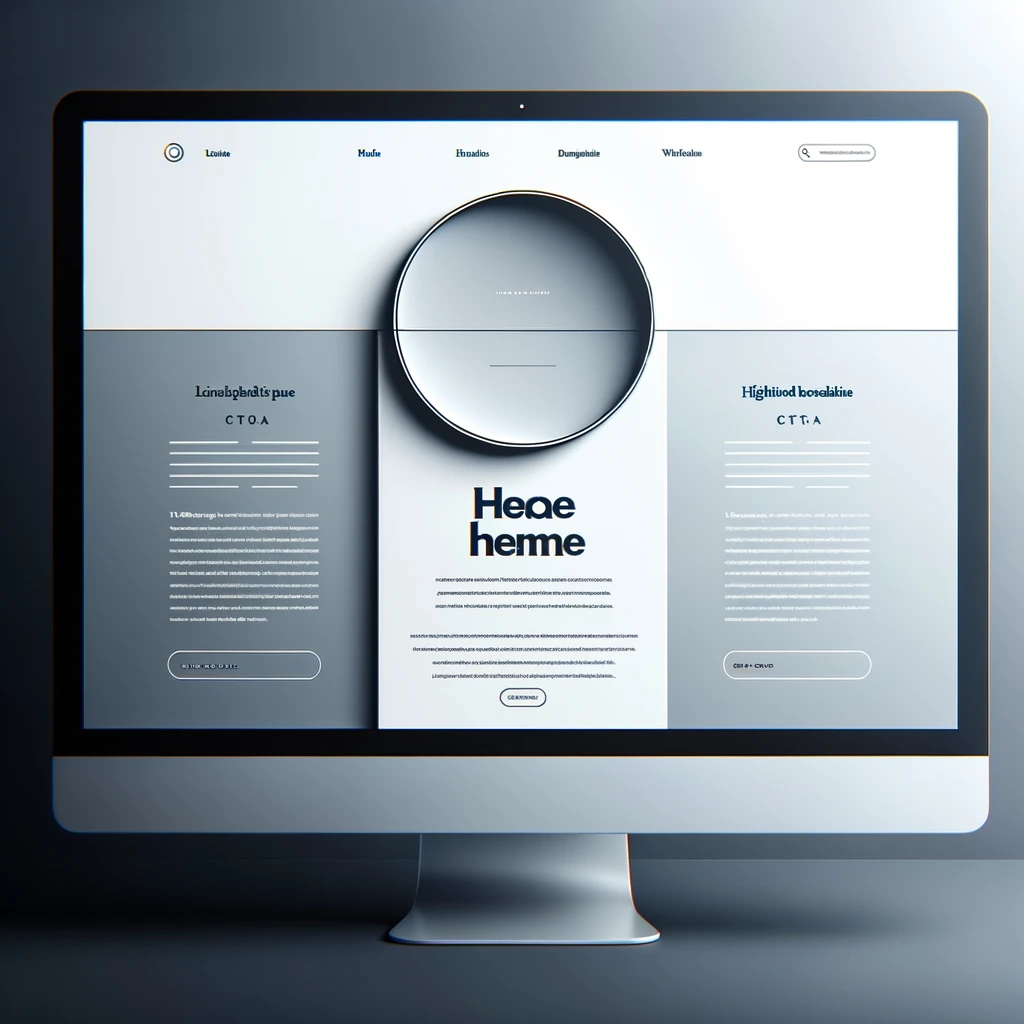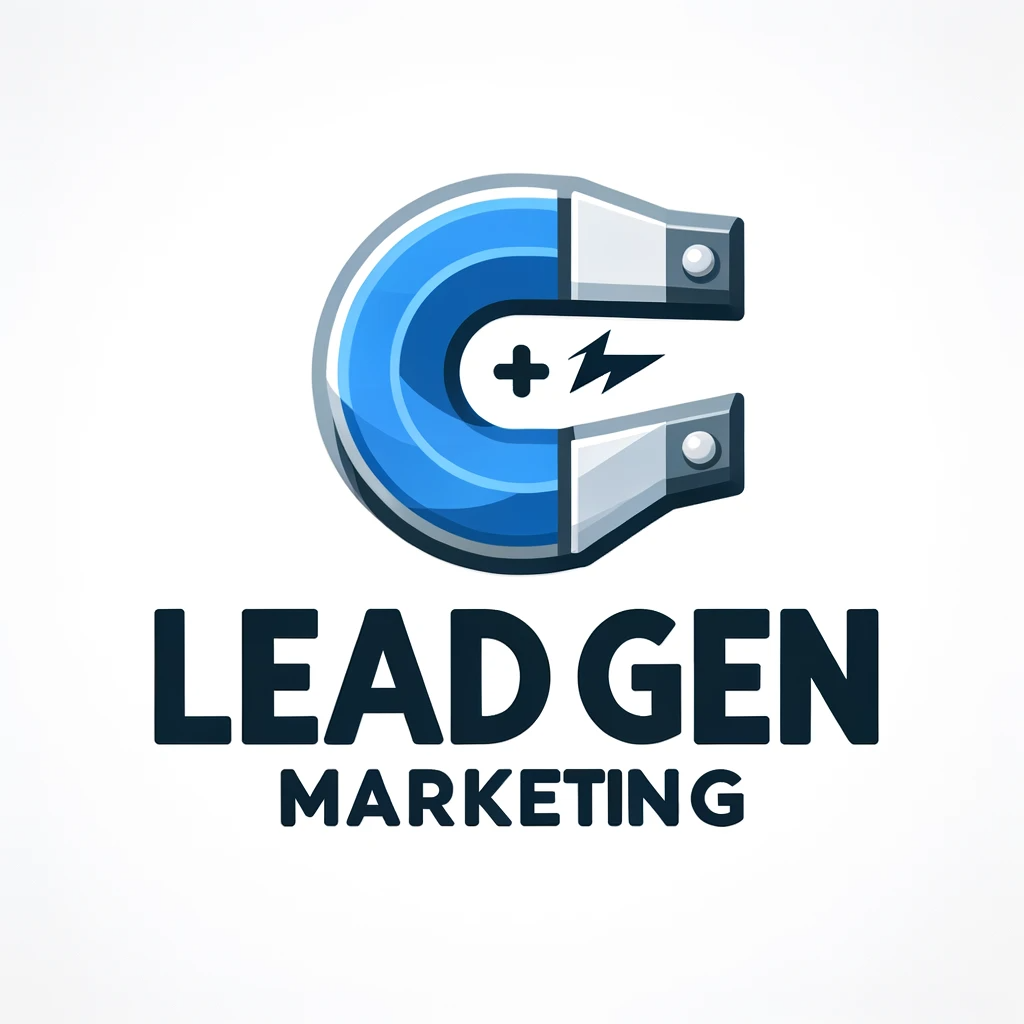In digital marketing, building high-converting web pages is essential to corporate success. Given the increase in online interactions, your website is frequently the first point of contact for prospective customers. Therefore, it is critical to create high-converting websites that draw in visitors and inspire them to take action.
Ready to transform your website? This guide reveals the essential elements of high-converting web pages for businesses.
What is conversion rate optimization?
Conversion rate optimization is the cornerstone of effective digital marketing strategies. It involves enhancing your website’s ability to convert visitors into active participants through purchasing, signing up for a newsletter, or filling out a contact form.
The conversion rate, a key metric in marketing, represents the proportion of visitors who engage in these desired actions. CRO isn’t just a one-time task. It’s a continuous process that demands testing, analyzing, and implementing data-informed strategies to refine the user experience and boost conversion rates.
Conversion Funnels

At the heart of conversion rate optimization is the conversion funnel concept. This isn’t merely a series of steps that a customer follows. It’s a comprehensive representation of their journey from initial contact to the point of conversion. Understanding and optimizing this journey is crucial to enhancing your digital marketing effectiveness.
A thorough examination of the conversion funnel allows for the identification of potential barriers and opportunities for improvement within a customer’s path to conversion. This insight is invaluable in fine-tuning your website’s design, content, and overall user experience. Doing so leads visitors more effectively through the funnel, potentially increasing lead generation and customer acquisition.
A conversion funnel is more than a pathway. It’s a lead-generation engine. By mapping the customer journey, you can identify crucial moments for capturing contact details, nurturing leads, and converting prospects into loyal customers. This strategic approach significantly elevates your conversion rates and expands your business.
Analyzing customer interactions at each funnel stage is essential for maximizing conversion rates. This involves pinpointing specific actions, content, or good design elements that effectively drive conversions. With this knowledge, you can optimize your website to yield better outcomes and achieve your business goals.
Aligning your website with your business objectives is critical. Understanding the progression of visitors through the funnel allows you to synchronize your site’s goals with user behavior, ensuring your website attracts visitors and effectively guides them toward desired actions.
Key Strategies for Creating High-Converting Web Pages

Here are the key Strategies you need to implement when creating High-Converting Web Pages
- The Science of Conversion Funnels: Understanding the nuances of customer journeys through conversion funnels is key. This involves analyzing the funnel stages to identify effective strategies that lead to conversions.
- Compelling Headlines and Persuasive Copy: Craft headlines that grab attention and copy that persuades visitors to take action. These elements should resonate with your target audience’s needs and interests.
- Strategic Call-to-Action Placement: Calls-to-action (CTAs) should be strategically placed to guide users toward conversion. This could be by signing up, purchasing, or requesting a free consultation.
- User-Friendly Design and Mobile Optimization: Ensure your website is easy to navigate and fully optimized for mobile devices. A seamless user experience is crucial for keeping potential customers engaged.
- Understanding User Psychology: Comprehend the psychological triggers that motivate users to convert. Tailor your website’s content and design to align with these motivations.
- SEO and Search Engine Optimization: Incorporate SEO best practices to improve your website’s visibility in search results. This includes using relevant keywords and optimizing site speed and responsiveness.
- AB Testing and Data Analysis: Regularly conduct AB testing to compare different versions of your web pages. This data-driven approach helps in making informed decisions to enhance website performance.
- Engaging Marketing Campaigns: Create compelling marketing campaigns that drive traffic to your website. Utilize platforms like search engines and social media tactics to reach a broader audience.
- Building a Robust Customer Base: Focus on strategies to expand and engage your customer base. This includes offering free consultations, conducting SEO audits, and employing email marketing tactics to collect email addresses.
- Sales Funnel Optimization: View your website as part of a larger sales funnel. Each element, from the first step a visitor takes to the final conversion, should be optimized to guide them toward becoming a loyal customer.
Incorporating these strategies when creating high-converting web pages into your website design and content will transform your web pages into high-converting assets. Remember, the goal is to drive traffic and convert that traffic into tangible business results. Engage in continuous optimization, and watch your website become a powerful tool in your business’s growth and success.
The Power of a Compelling Headline
The headline on a good web page is pivotal, as it’s the first important element that catches a visitor’s attention. To ensure visitors feel they are in the right place (“Where?”), when creating high-converting web pages, the headline should address their needs and pain points. This confirms to the visitor that they’ve arrived at a relevant site and sets the tone for their journey on the page. A compelling headline will clearly articulate the landing page’s value proposition, resonating with the target audience’s interests or problems.
Role of Persuasive Subheads

Subheads guide visitors through the landing page (“What?”). They break down information into digestible pieces and provide visual breaks, making the content understandable. Compelling subheads engage readers by leading them smoothly toward the desired action, like clicking a Call-To-Action (CTA) button. By highlighting the value proposition and enticing them to proceed, well-crafted subheads continuously reassure visitors of the page’s advantages and solutions, answering the question, “Why should I do it?”
Crafting Persuasive Copy That Converts
Compelling copy should address visitors’ pain points, highlight the benefits of your product or service, and provide clear instructions on how to take action. It would be best to focus on this when creating high-converting web pages.
Effective copywriting can lead to better results. Persuasive copy can influence visitors’ decisions, address their objections, and guide them toward conversion. By communicating value, building trust, and showcasing social proof, you can increase conversion rates and achieve better results for your business.
Crafting excellent content marketing materials is essential for conversion rate optimization. Whether blog posts, landing page content, or email newsletters, content marketing materials are crucial in converting visitors into customers. You can build credibility, establish thought leadership, and increase conversion rates by providing high-quality, informative, and engaging content.
Placement of CTA Buttons when Creating High-Converting Web Pages
The strategic placement of action buttons is essential for the website’s conversion rate. Call-to-action (CTA) buttons serve as signposts, guiding visitors toward desired actions, such as purchasing, signing up for a newsletter, or requesting a free trial. By strategically placing CTA buttons throughout your web page, visitors are more likely to notice them and take action.
Effective action button placement can lead to higher conversion rates. The placement of your CTA buttons should be intuitive, prominent, and visually appealing. By testing different placements, colors, sizes, and wording, you can optimize your website’s conversion rate and increase the chances of visitors converting into customers.
For example, a landing page for email marketing software might include an action button that says, “Start Your Free Trial Today!” Placing this button prominently, using contrasting colors, and positioning it next to compelling content, such as customer testimonials, can lead visitors towards conversion, resulting in higher conversion rates.
User-Friendly Website Design for Better Conversions
User-friendly website design is crucial in engaging visitors, guiding them through the user experience, and ultimately driving higher conversion rates. Let’s explore the role of intuitive design in user engagement, the importance of utilizing design elements, and mobile optimization as a necessity for modern websites.
The Role of Intuitive Design in User Engagement
Intuitive web design is essential for website visitors. When visitors arrive on your website, they should be able to navigate, find information, and take action quickly. Intuitive web design focuses on the user experience, ensuring visitors can quickly understand how to interact with your website, resulting in higher user engagement and better conversion rates.
An effective navigation menu can lead to higher conversion rates. The navigation menu is a crucial element of the user experience, allowing visitors to explore different sections of your website, find information, and take desired actions. Visitors can easily find what they’re looking for by designing a straightforward, user-friendly navigation menu, resulting in higher conversion rates and better business results.
Utilizing good graphic design can lead to better results. Visual design elements, such as high-quality images, professional typography, and visually appealing layouts, are crucial to user engagement and conversion rates. Using good graphic design, you can create a visually appealing website that captivates visitors, communicates value propositions, and encourages action.
Mobile Optimization: A Necessity for Modern Websites

In today’s mobile-driven world, mobile optimization is no longer an option but a necessity for modern websites. With more and more users accessing the internet through mobile devices, ensuring that your website is mobile-friendly, loads quickly, and provides a seamless user experience across all devices is crucial.
The Impact of the Mobile-First Approach on Conversion Rates
A mobile-first approach can lead to higher conversion rates. By designing your website with mobile devices in mind, you prioritize the user experience on smaller screens, ensuring that visitors can easily navigate, read content, and take action. A mobile-first approach results in higher conversion rates, lower bounce rates, and better user engagement.
Websites optimized for mobile devices tend to have lower bounce rates. Visitors who access your website using a mobile device expect a fast, user-friendly experience. If your website is not mobile-optimized, visitors may experience slow loading times, difficult navigation, and content that is hard to read. This can lead to high bounce rates, where visitors leave your site without taking any action.
Mobile-friendly web pages often increase user engagement and more extended site visits. When visitors have a positive user experience on your mobile website, they are more likely to engage with your content, explore different pages, and spend more time on your site. This increased user engagement can lead to higher conversion rates as visitors have more opportunities to take desired actions.
Mobile optimization can significantly improve a website’s conversion rate. By optimizing your website for mobile devices, you ensure that visitors can easily find information, navigate, and take action, regardless of the device they are using. This optimization process results in higher conversion rates, a better user experience, and improved business results.
Tips to Effectively Optimize Your Website for Mobile Devices
Use responsive design to ensure web pages adapt to various screen sizes. Responsive design automatically adjusts your website’s layout, content, and navigation based on the user’s device, providing a user-friendly experience across all screens.
Optimize images and videos to improve site speed on mobile devices. Large media files can slow page loading, leading to high bounce rates. Compressing images, converting videos to mobile-friendly formats, and using lazy loading techniques can speed up your website and provide a better user experience.
Ensure easy navigation, clear call-to-action buttons, and readable content. On mobile devices, visitors have limited screen space, so it’s important to design navigation menus, action buttons, and content that are easy to locate, tap, and read. Use clear labels, ample spacing, and mobile-friendly fonts to enhance the user experience.
Test a website’s mobile-friendliness using Google’s mobile-friendly test tool. Google’s mobile-friendly test tool provides insights into how mobile-friendly your website is, highlighting potential issues and offering suggestions for optimization. You can improve the user experience and conversion rates by identifying and addressing mobile usability issues.
Make sure contact forms and other interactive elements work seamlessly on mobile devices. Visitors should be able to easily complete contact forms, sign up for newsletters, or initiate online transactions on mobile devices. Test these interactive elements on various mobile devices to ensure they are user-friendly, functional, and error-free.
Psychology of User Behavior in Creating High-Converting Web Pages

Understanding what drives visitors to action is vital to creating high-converting web pages. By delving into the psychology of user behavior, we can uncover insights that help us design web pages that resonate with visitors, address their needs, and lead them toward conversion.
Understanding What Drives Visitors to Take Action
Understanding user motivations and needs can lead to higher conversion rates. By putting yourself in visitors’ shoes, you can identify what drives them to take action, whether it’s solving a problem, fulfilling a desire, or seeking information. By aligning your web page content with visitors’ goals and expectations, you increase the chances of conversion.
Identifying user pain points can help create a compelling value proposition. Visitors often visit your website because they have a specific pain point or problem they want to solve. By understanding their pain points, you can craft a value proposition that addresses their needs, offers a solution, and communicates the unique benefits of your product or service.
Recognizing user intent is crucial for designing an effective web page. When visitors arrive on your web page, they have a specific intent, such as making a purchase, signing up for a newsletter, or requesting more information. By designing webpages that align with user intent, address their specific needs, and provide clear next steps, you increase the chances of conversion.
Knowing user psychology can lead to a better website conversion rate. By understanding how visitors think, process information, and make decisions, you can design web pages that engage, persuade, and lead visitors toward desired actions. This understanding allows you to address visitors’ objections, establish trust, and create a user experience that resonates with their psychology, resulting in higher conversion rates.
Aligning website content with user’s goals and expectations can lead to higher conversion rates. Visitors come to your website with specific goals, whether finding information, purchasing, or seeking support. By creating high-converting web pages that meet their expectations by aligning your content, design, and user experience with visitors’ goals, you address their needs and, ultimately, lead to higher conversion rates.
Utilizing Behavioral Insights
Using social proof, testimonials, and case studies can influence user behavior. Visitors often look for social proof, such as customer reviews, testimonials, and case studies, to validate their decision-making process. By incorporating social proof into your web page content, you can address visitors’ concerns, build credibility, and increase conversion rates.
Leveraging user experience design principles can lead to higher conversion rates. User experience design focuses on creating web pages that are intuitive, user-friendly, and visually appealing. Incorporating design principles such as straightforward navigation, intuitive layouts, and user-friendly forms enhances the user experience, increases engagement, and drives higher conversion rates.
Applying user psychology insights can lead to better website conversion rate optimization. By understanding how visitors process information, make decisions, and respond to persuasive techniques, you can design web pages that address their specific psychological needs, trigger desired emotions, and lead to higher conversion rates. This optimization process involves testing, analyzing, and refining your website based on user psychology insights.
Transforming Traffic into Tangible Business Results
Now that we’ve explored the key elements of high-converting web pages, let’s delve into how you can transform traffic into tangible business results. By identifying your website’s target audience, measuring conversion metrics, utilizing heat maps, and nurturing a content marketing strategy, you can maximize the value of your website traffic and achieve better business results.
Identifying Your Website’s Goals and Target Audience
When creating high-converting web pages, defining your website’s end goal is important for higher conversion rates. Whether it’s increasing sales, generating leads, or building brand awareness, identifying your website’s goals allows you to design web pages that align with these goals, address visitors’ needs, and lead them toward conversion, resulting in better business results.
Identifying your website’s conversion funnel is important for a better conversion rate. By mapping out the customer journey from initial contact to conversion, you can identify potential bottlenecks, optimize the user experience, and lead visitors toward desired actions. This optimization process results in higher conversion rates, increased customer acquisition, and better business results.
How to Measure Website Conversion Metrics
Utilize Google Analytics and split testing to measure the website’s conversion rate. Google Analytics provides valuable insights into website traffic, user behavior, conversion rates, and other important metrics. By analyzing this data, you can identify areas for optimization, test different designs or content variations, and make data-driven decisions to improve your website’s conversion rate.
Monitoring bounce rate, action button clicks, and web page interactions are important. Bounce rate, which measures the percentage of visitors who leave your site without taking any action, is an important metric to monitor. Additionally, tracking action button clicks, user interactions, and page views helps you understand user behavior, website performance, and potential areas for optimization.
Tracking website visitors, email list growth, and contact information capture is essential. You can measure lead generation efforts, customer acquisition rates, and conversion by monitoring website visitors, email newsletter sign-ups, and contact information capture. This information allows you to optimize your website’s conversion rate optimization efforts and drive better business results.
Heat Maps Help Improve Content Interaction on Your Website?

Heat maps provide insights into user interaction with a website’s content. Heat maps visually represent user behavior, indicating where visitors click, scroll, and spend the most time on your web page. By analyzing heat map data, you can gain insights into user engagement, content interaction, and potential areas for optimization.
Using heat maps can lead to a better understanding of user navigation and site interaction. This information allows you to optimize navigation menus, content placement, and design elements, resulting in higher user engagement and better conversion rates.
By analyzing heat map data, you can identify professional design elements, such as action buttons, images, or headlines, that receive high user engagement. This information allows you to optimize design elements, content placement, and the user experience, resulting in higher conversion rates and better business results.
Why Does a High-Converting Website Nurture a Content Strategy?
A high-converting website ensures maximum value for your content marketing efforts. By designing web pages that lead visitors towards conversion, content marketing materials, such as blog posts, landing page design, lead magnets, social media content, and email newsletters, have a higher chance of converting visitors into customers, maximizing the value of your content marketing efforts.
It serves as the landing page for potential customers, optimizing conversion rates. When visitors arrive on your website, they should be greeted with web pages that address their specific needs, offer value propositions, and lead them towards desired actions. By nurturing a content marketing strategy that aligns with web page design, visitors are more likely to convert, resulting in higher conversion rates and better business results.
A high-converting website focuses on the user experience, guiding visitors through the conversion funnel from initial contact to conversion.
Content marketing materials, such as case studies, customer testimonials, lead magnets, and lead generation forms, play a crucial role in converting visitors into customers.
Creating high-converting Web pages emphasizes the user experience, ensuring that visitors can easily navigate, find information, and take action. By nurturing a content marketing strategy that aligns with web page design, visitors are more likely to engage, trust, and convert, resulting in higher conversion rates and better business results.
Conclusion
In conclusion, creating high-converting web pages requires a deep understanding of user behavior, strategic placement of elements, and intuitive design. By optimizing your conversion rate, you can transform website traffic into tangible business results. Remember to define your website’s goals and target audience, and measure conversion metrics to track your progress.
Utilize the power of heat maps to improve content interaction and nurture a content marketing strategy that aligns with your high-converting website. If you need assistance mastering the art of creating high-converting web pages, please contact us. Our experts help you achieve good results for your online business.


No responses yet